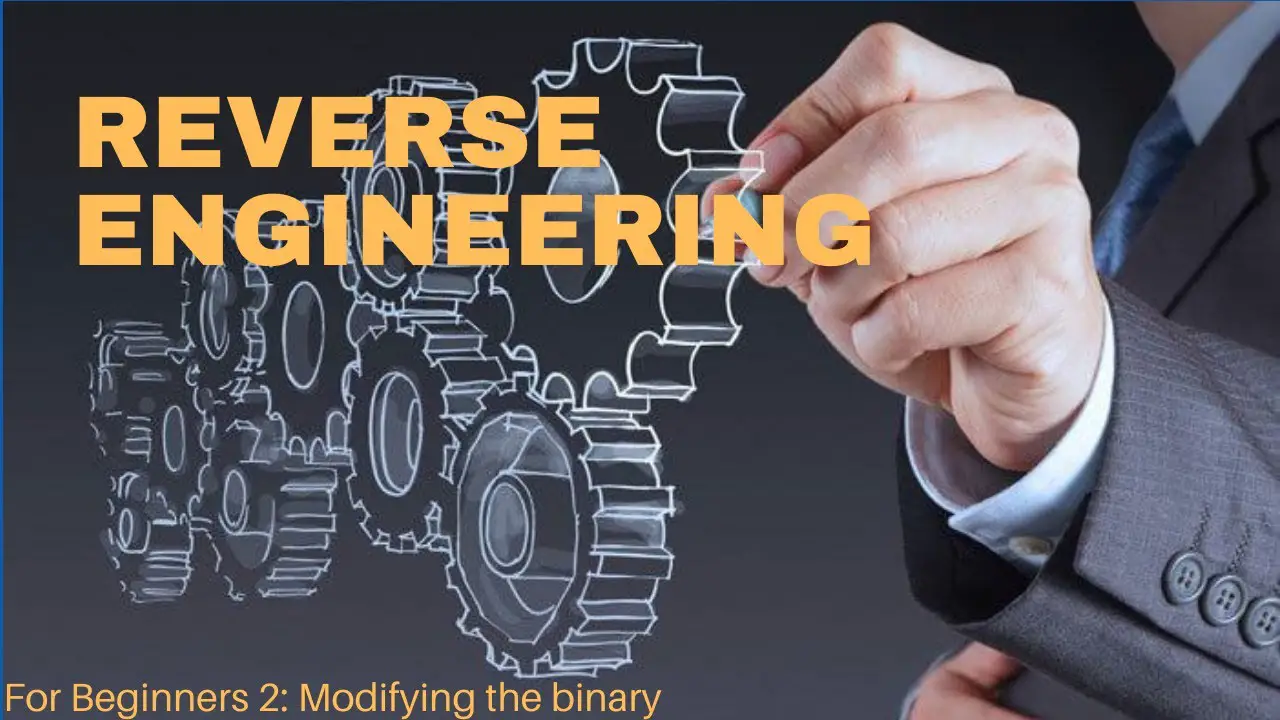1. Understanding the Concept of Reverse Engineering:

- Reverse engineering involves taking apart a product or system and analyzing its design, structure, and functionality to understand its workings.
- It is used in various fields, including software development, hardware design, and product design, to gain insights, learn from existing solutions, and identify areas for improvement.
2. Identifying a Suitable Target:

- Choose a product, software, or system that interests you or offers a practical learning opportunity.
- Consider factors such as complexity, level of documentation, availability of source code, and your prior knowledge.
3. Acquiring the Necessary Software Tools:

- Select suitable software tools for disassembly, decompilation, and analysis based on the target’s specifications.
- Common tools include disassemblers, decompilers, hex editors, and debuggers. Some tools are free while others may require a license.
4. Preparing the Target:
- If working with physical products, disassemble the device carefully without causing damage.
- For software or digital products, obtain the necessary installation files, executables, and source code (if available).
- Ensure you have a clean and organized workspace for your analysis.
5. Disassembly and Decompilation:
- Use appropriate disassembly tools to extract machine instructions from binary code or executable files.
- Utilize decompilers to translate disassembled code into high-level programming languages for better readability.
6. Analysis and Understanding:
- Analyze the disassembled or decompiled code, data structures, and algorithms to uncover the inner workings of the target.
- Document your findings, including functional components, dependencies, and potential vulnerabilities.
7. Identifying Key Design Concepts:
- Pay attention to patterns, design principles, and architectural components used in the target.
- This can provide valuable insights into its overall structure and modularity.
8. Identifying Opportunities for Improvement:
- Look for potential areas where the target can be improved, such as through performance optimization, security enhancements, or adding new features.
9. Reassemble and Customize:
- If the target is open-source or customizable, consider modifying and rebuilding based on your insights gained from the reverse engineering process.
10. Ethical Considerations:
- Always keep ethical and legal considerations in mind. Ensure you have the necessary rights and permissions to reverse engineer the target product or software.
11. Continual Learning and Practice:
- Reverse engineering is an iterative process that requires patience and dedication.
- Practice regularly, learn from others in the field, and stay updated with emerging tools and techniques.
By following these steps and持續的練習,anyone can learn the basics of reverse engineering and gain valuable insights into the inner workings of products and software.# Reverse Engineering For Beginners: Where To Start
Executive Summary
Reverse engineering is the process of taking something apart and analyzing its structure and function in order to understand how it works. This can be done with anything from a simple machine to a complex computer program. Reverse engineering is a valuable skill that can be used for a variety of purposes, including:
- To understand how something works: By taking something apart and analyzing its components, you can learn how it functions. This can be helpful for troubleshooting problems, improving designs, and developing new products.
- To gain a competitive advantage: By understanding how a competitor’s product works, you can develop strategies to improve your own products or services.
- To protect yourself from security vulnerabilities: By analyzing the code of a software program, you can identify potential security vulnerabilities that could be exploited by attackers.
Introduction
Reverse engineering is a powerful tool that can be used for a variety of purposes. Whether you’re a tinkerer, a developer, or a security researcher, reverse engineering can help you understand how things work and how to improve them.
The first step to reverse engineering is to find a subject that you’re interested in. This could be anything from a simple machine to a complex computer program. Once you have chosen a subject, you need to gather as much information about it as possible. This may include:
- Reading the documentation
- Talking to experts
- Experimenting with the subject
Once you have a good understanding of the subject, you can start to take it apart. This may involve physically disassembling the subject or using software tools to decompile the code. As you take the subject apart, you should carefully document your findings. This will help you understand how the subject works and how to put it back together again.
Once you have a complete understanding of the subject, you can use this knowledge to improve it or develop new products or services. Reverse engineering can be a challenging and rewarding process. With a little effort, you can learn how to reverse engineer almost anything.
How to Get Started with Reverse Engineering
There are a few things you need to do to get started with reverse engineering:
-
Choose a subject that you’re interested in: The best way to learn reverse engineering is to start with something you’re already interested in. This will make the process more enjoyable and motivating.
-
Gather as much information as possible: The more you know about your subject, the easier it will be to reverse engineer it. Read the documentation, talk to experts, and experiment with the subject to learn as much as you can about it.
-
Take the subject apart: Once you have a good understanding of the subject, you can start to take it apart. This may involve physically disassembling the subject or using software tools to decompile the code. As you take the subject apart, carefully document your findings. This will help you understand how the subject works and how to put it back together again.
-
Analyze the subject: Once you have the subject apart, you can start to analyze it. This involves examining the components of the subject and how they work together. You should also look for any security vulnerabilities or other problems.
-
Put the subject back together: Once you have analyzed the subject, you can put it back together again. This is a good way to test your understanding of the subject and to make sure that it still works properly.
Common Reverse Engineering Techniques
There are a variety of reverse engineering techniques that can be used to analyze a subject. These techniques include:
-
Disassembly: Disassembly is the process of taking a machine or program apart into its individual components. This can be done physically or using software tools.
-
Decompilation: Decompilation is the process of converting compiled code back into source code. This can be done using a variety of software tools.
-
Dynamic analysis: Dynamic analysis is the process of examining how a program or system behaves while it is running. This can be done using a variety of tools, such as debuggers and profilers.
-
Static analysis: Static analysis is the process of examining the code of a program or system without running it. This can be done using a variety of tools, such as lint checkers and code analysis tools.
-
Fault injection: Fault injection is the process of deliberately introducing errors into a system in order to see how it responds. This can be done using a variety of techniques, such as memory corruption and power glitches.
Conclusion
Reverse engineering is a powerful tool that can be used to understand how things work, improve existing products, and develop new products and services. With a little effort, you can learn how to reverse engineer almost anything.
Keyword Phrase Tags
- Reverse engineering
- Reverse engineering for beginners
- How to reverse engineer
- Reverse engineering techniques
- Reverse engineering tools

This is a great starting point for beginners interested in reverse engineering. The article provides a comprehensive overview of the topic and offers valuable resources for further exploration.
While the article touches on some key aspects of reverse engineering, it fails to delve deeply into the technical intricacies. It would benefit from more detailed explanations and practical examples.
The article accurately introduces the concept of reverse engineering and provides a good foundation for further research. However, it lacks information on advanced techniques and industry-specific applications.
The author’s claim that reverse engineering is only for experts is debatable. With the right resources and dedication, beginners can also make significant progress in this field.
It’s funny how the article emphasizes the importance of reverse engineering in various industries yet fails to provide any concrete examples of its real-world applications.
Oh, look, another generic article on reverse engineering that regurgitates the same old information without offering any fresh insights. Yawn.
Reverse engineering? Sounds like a fancy way of taking something apart and putting it back together again. But hey, at least you won’t have to buy new toys!
I wonder if there are any online courses or workshops that teach reverse engineering for complete beginners. That would be purr-fect!
I’m not sure I buy the author’s reasoning that reverse engineering is essential for innovation. I mean, why reinvent the wheel, right?
This article has sparked my interest in reverse engineering. I can’t wait to dive deeper into the topic and learn more about its applications in different fields.
While the article provides some basic information, it lacks a discussion on the ethical implications and potential misuse of reverse engineering.
I strongly disagree with the author’s assertion that open-source software is inferior to proprietary software. Reverse engineering can help improve both types of software.
Oh, so now reverse engineering is the key to world peace? I guess we can all pack up and go home, folks.